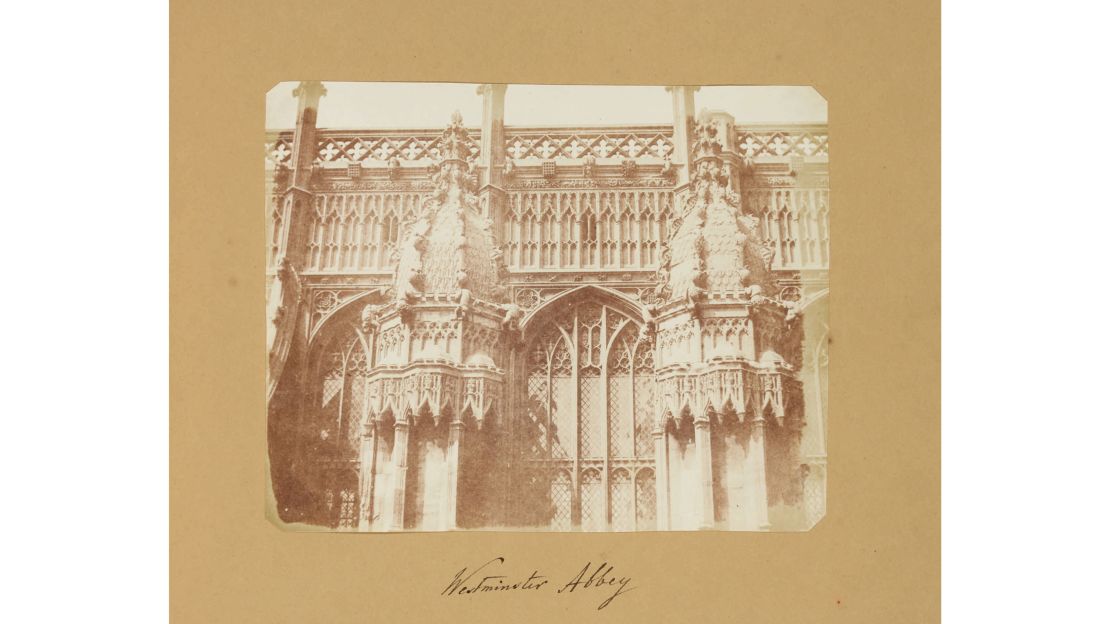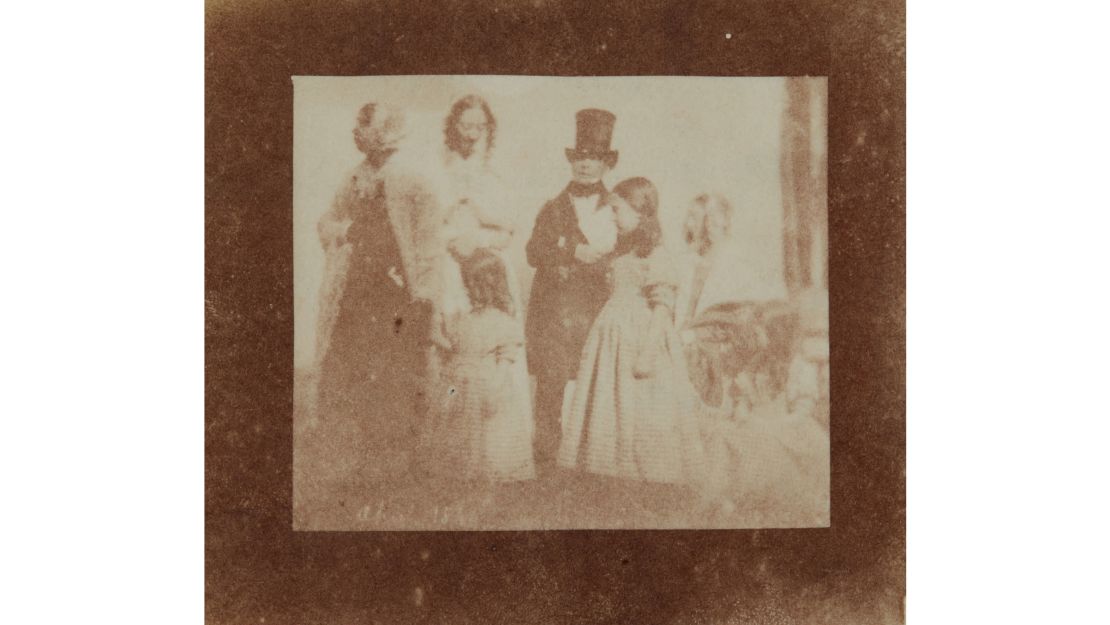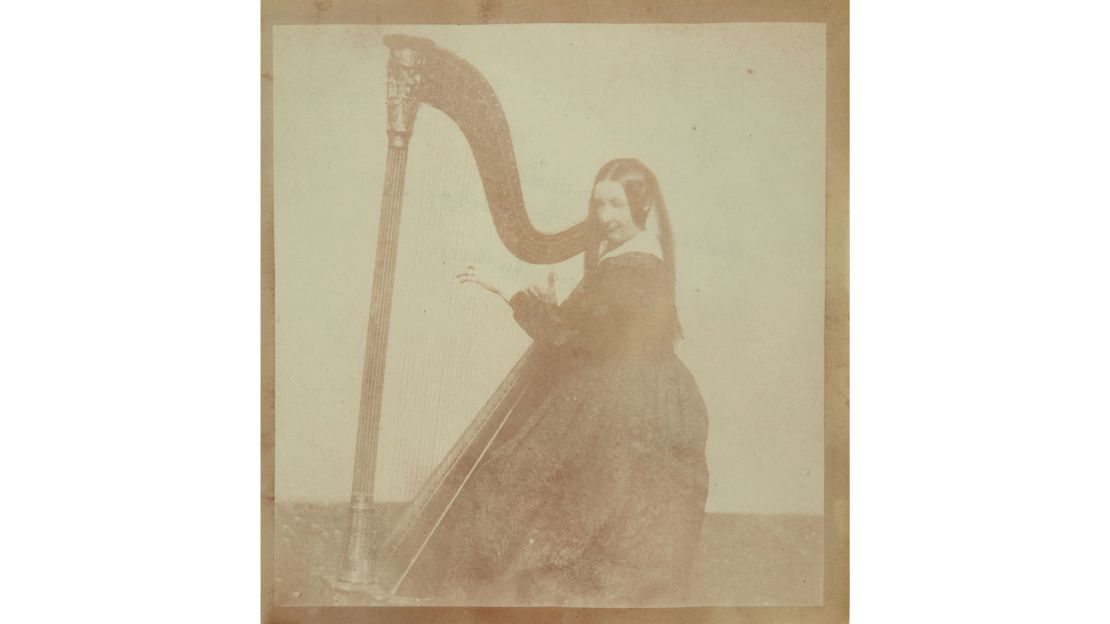A collection of around 200 images by one of history’s first photographers, William Henry Fox Talbot, has smashed auction estimates to sell for over $1.95 million.
Sotheby’s auction house, which handled the sale, has described the photographs as “arguably the most important lot of 19th century photographs to ever come to market.”
Offering a rare glimpse of early Victorian Britain, the images depict indoor and outdoor scenes, spanning architecture, botany and daily life in the 1840s. Talbot, an English scientist and inventor, also produced various portraits of family members and friends as he experimented with his pioneering camera technology.
Offered at auction as a single lot, the collection comprised over 70 loose photographs and three albums of printed images. It also included rare versions of Talbot’s publication “Sun Pictures in Scotland” which documents his travels through Scotland, as well as several parts of his celebrated work “The Pencil of Nature.”

Some of the photographer’s best-known images were among the 191 up for sale, including a shot showing the now-famous London monument, Nelson’s Column, under construction in 1844. Speaking ahead of the sale, head of Sotheby’s photography department, Emily Bierman, said the value of the collection lay not simply in its age and condition, but in its variety and completeness.
“Over the years, these photographs have become harder and harder to find, because they are snapped up and are in private or institutional collections,” Bierman said in a phone interview. “To have a full collection, an archive … is something you couldn’t even dream up.
“The photos include a great mixture of personal studies, as well as images from his travels and of important monuments … though some of the greatest surprises are definitely the portraits,” she added, referencing rare images of Talbot’s mother and the celebrated writer Thomas Moore.

In the 1840s, Talbot gave the items to his half-sister Henrietta Horatia Maria Gaisford, who appears in a number of the photos. They had been passed down through the family ever since, with the recently concluded auction marking the first time they had been available on the collectors’ market. Gaisford’s personal sketchbook, which contains drawings and watercolors, was also included in the sale.
Sotheby’s had initially estimated that the collection would go for between $300,000 and $500,000. The final sale price of almost $2 million far surpassed the previous record for a collection of Talbot’s photos, set at Sotheby’s in 2018, when a complete copy of “The Pencil of Nature” was purchased for $275,000.
Early pioneer
Talbot developed his groundbreaking “salted paper” photography technique during a vacation in the early 1830s, when he grew frustrated with the limitations of sketching. Using a solution containing salt and, later, silver nitrate, he created a light-sensitive surface from ordinary writing paper, which darkened when exposed to sunlight.
He would later develop the influential calotype (or talbotype) technique, which was more complex than the salted paper process but drastically reduced exposure times. Though not as popular as the daguerreotype, which became widely used around the world in the 1840s, Talbot’s technique proved hugely influential in the development of camera technology, as it produced photographic negatives that allowed images to be more easily replicated.

But while Talbot was a keen alchemist and an important figure in the science of photography, Bierman also commended his artistic sensibilities.
“The compositions are incredibly sophisticated,” she said, citing a landscape photo taken in Scotland that used the water’s reflection to produce a “confluence of triangles that are perfectly centered.”
“Thinking about the constraints he would have faced in practicing photography so early, to have the foresight as to how exactly you’re going to translate what you see before you into a physical print is, I think, true artistry.”
Talbot’s collection went under the hammer as part of the “50 Masterworks to Celebrate 50 Years of Sotheby’s Photographs” auction, which brought together some of the medium’s most important names and concludes Thursday. Elsewhere in the sale, a collection of Sebastião Salgado’s images showing life in a Brazilian gold mine fetched $126,000.
According to Bierman, photography sales have weathered the pandemic more successfully than many other parts of the auction market, which has been severely disrupted by limits on viewing events and in-person sales. She attributed some of this to first-time buyers, who may see photography as a more accessible and affordable way into art collecting.
“In 2020, about a third of our bidders and buyers for photograph sales were either new to the market completely or new to Sotheby’s,” she said. “That’s astonishing and definitely points to a healthy market.”
This article was updated with the final sale price and subsequent on April 22, following the auction’s conclusion.








